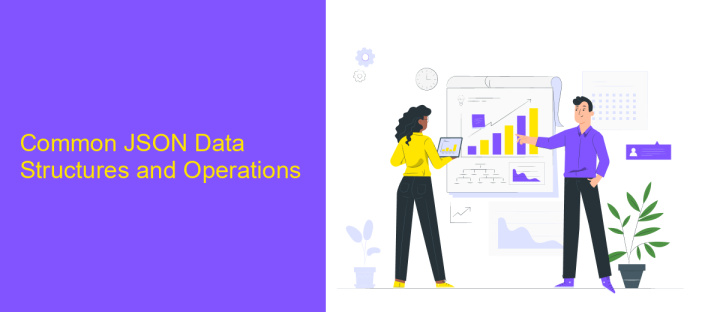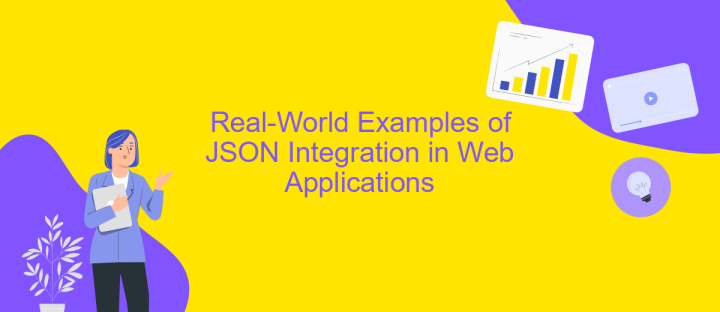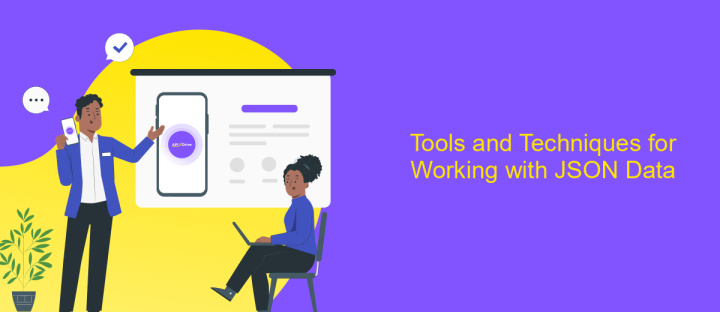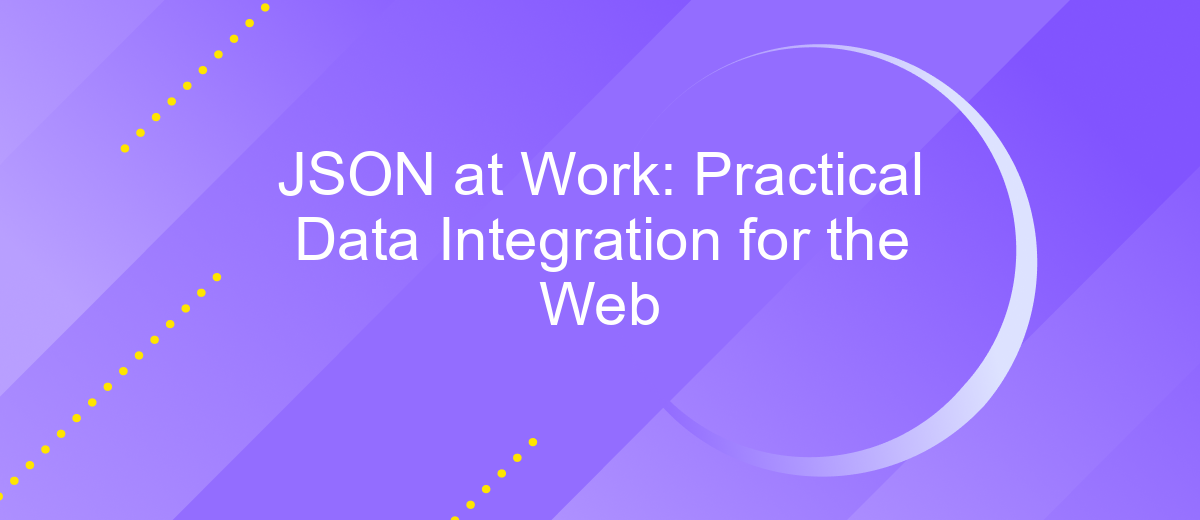JSON at Work: Practical Data Integration for the Web
In today's interconnected digital landscape, efficient data integration is crucial for seamless web functionality. "JSON at Work: Practical Data Integration for the Web" explores the pivotal role of JSON in modern web development. This article delves into practical applications and best practices for utilizing JSON to streamline data exchange, enhance interoperability, and optimize web performance, empowering developers to harness its full potential for innovative solutions.
Introduction to JSON and its Role in Web Data Integration
JavaScript Object Notation (JSON) has become a cornerstone in web data integration due to its simplicity and flexibility. As a lightweight data interchange format, JSON is easy for humans to read and write, while also being straightforward for machines to parse and generate. This dual advantage makes JSON an ideal choice for transmitting data between a server and a web application, enhancing the efficiency of web communication and integration.
- JSON is text-based and language-independent, making it universally accessible.
- It supports complex data structures, including nested objects and arrays.
- JSON's syntax is derived from JavaScript, ensuring seamless integration with web technologies.
- Its lightweight nature reduces bandwidth usage, optimizing web performance.
In the context of web data integration, JSON plays a pivotal role by enabling seamless data exchange between disparate systems. Its compatibility with various programming languages allows developers to integrate APIs and services effortlessly, fostering a more connected and interactive web ecosystem. As digital landscapes continue to evolve, JSON remains a critical tool for developers aiming to streamline data integration processes and enhance application interoperability.
Common JSON Data Structures and Operations

JSON, or JavaScript Object Notation, is a lightweight data interchange format widely used for representing structured data. Its simplicity and readability make it ideal for web applications and APIs. Common JSON data structures include objects and arrays, where objects are collections of key-value pairs, and arrays are ordered lists of values. These structures allow developers to model complex data hierarchies efficiently. For example, an object can represent a user with properties such as name, email, and address, while an array can hold a list of such users. JSON's flexibility supports various data types, including strings, numbers, booleans, and null values.
JSON operations typically involve parsing and serializing data. Parsing converts JSON data into a usable format within a programming language, while serialization transforms data back into JSON for transmission or storage. Tools like ApiX-Drive facilitate seamless data integration across platforms by automating these operations. ApiX-Drive allows users to connect different services without coding, enabling efficient data synchronization and workflow automation. By leveraging such tools, businesses can streamline their processes, ensuring consistent and accurate data exchange between disparate systems.
Real-World Examples of JSON Integration in Web Applications

JSON, or JavaScript Object Notation, has become a cornerstone in web application development due to its simplicity and versatility. It allows seamless data exchange between a server and a client, making it an essential tool for modern web applications. JSON's lightweight structure improves performance and enhances user experience by enabling real-time data updates without reloading entire web pages.
- Single Page Applications (SPAs): JSON is widely used in SPAs to fetch data from servers asynchronously, allowing dynamic content updates without full page reloads.
- RESTful APIs: JSON is the standard format for data exchange in RESTful APIs, enabling efficient communication between different web services and applications.
- Data Visualization: JSON is often used to feed data into visualization libraries like D3.js, allowing developers to create interactive charts and graphs directly in the browser.
These examples illustrate how JSON facilitates efficient data integration and enhances functionality in web applications. Its human-readable format and compatibility with JavaScript make it an ideal choice for developers looking to build responsive and dynamic web interfaces. As web technologies continue to evolve, JSON remains a fundamental component in the toolkit of web developers worldwide.
Tools and Techniques for Working with JSON Data

Working with JSON data has become essential for web developers and data analysts. JSON, or JavaScript Object Notation, is a lightweight data interchange format that's easy to read and write for humans and machines. To efficiently handle JSON data, a variety of tools and techniques have been developed to streamline parsing, validation, and transformation processes.
One of the most common tools for managing JSON data is JSON parsers, which are available in almost every programming language. These parsers help convert JSON strings into native data structures, facilitating data manipulation and analysis. Additionally, JSON validation tools ensure that data adheres to specified schema standards, preventing errors and inconsistencies.
- JSONLint: A popular online tool for validating and formatting JSON data.
- jq: A powerful command-line JSON processor for transforming and querying JSON data.
- Postman: An API development environment that allows testing and visualizing JSON responses.
For more advanced JSON operations, developers often use libraries such as Jackson for Java or Gson for more complex data binding and serialization tasks. These tools and techniques enable efficient data integration and enhance the capability to work with JSON across various platforms and applications.
- Automate the work of an online store or landing
- Empower through integration
- Don't spend money on programmers and integrators
- Save time by automating routine tasks
Best Practices and Future Trends in JSON-Based Data Integration
When integrating data using JSON, it's crucial to adhere to best practices to ensure efficient and secure data exchanges. Firstly, always validate JSON data to prevent errors and security vulnerabilities. Use schemas to enforce data structure and types, reducing the risk of malformed data. Additionally, optimize JSON for performance by minimizing data size and using efficient parsing techniques. Proper documentation of the JSON API is also essential, as it aids developers in understanding data structures and endpoints, leading to smoother integration processes.
Looking towards future trends, JSON-based data integration is moving towards more automated and user-friendly solutions. Services like ApiX-Drive are at the forefront, offering platforms that simplify the integration process without requiring extensive coding knowledge. These tools provide intuitive interfaces for setting up integrations, allowing businesses to connect various applications seamlessly. As the demand for real-time data grows, expect advancements in JSON streaming and transformation capabilities, enabling faster and more dynamic data interactions across systems.
FAQ
What is JSON and why is it important for web data integration?
How can I transform JSON data for integration purposes?
What are some best practices for working with JSON in web applications?
How can I automate the integration of JSON data from multiple web services?
What challenges might I face when integrating JSON data, and how can I overcome them?
Time is the most valuable resource for business today. Almost half of it is wasted on routine tasks. Your employees are constantly forced to perform monotonous tasks that are difficult to classify as important and specialized. You can leave everything as it is by hiring additional employees, or you can automate most of the business processes using the ApiX-Drive online connector to get rid of unnecessary time and money expenses once and for all. The choice is yours!


